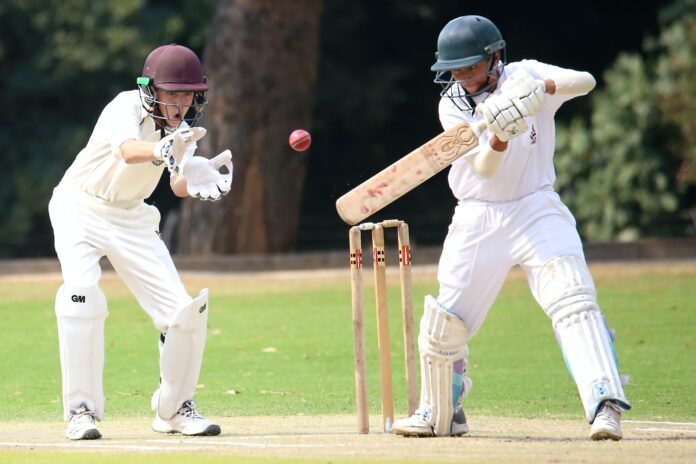News reports recently shocked social media as they revealed the tragic passing of a young boy from Pune. The 11-year-old met with a fatal accident while playing cricket near Jagadguru International School on the evening of 6 May. The incident, which occurred when a ball struck his private parts, serves as a grim reminder of the importance of using protective gear, particularly abdominal guards, when engaging in sports.
Abdominal guards, also known as “boxes” or “cups,” are crucial pieces of protective equipment designed to shield the groin area from impact during sports activities. While they are commonly associated with cricket, abdominal guards are also used in various other sports such as hockey, baseball, martial arts, and lacrosse.
The primary function of an abdominal guard is to absorb and distribute the force of impact away from the delicate groin area, reducing the risk of injury and trauma. By providing a protective barrier between the body and potential hazards, abdominal guards play a vital role in safeguarding athletes from serious harm.
In cricket, where fast-paced deliveries can reach speeds exceeding 90 miles per hour, the use of abdominal guards is particularly important for batsmen and wicketkeepers. A well-fitted and properly positioned abdominal guard can significantly reduce the risk of serious injury from cricket balls impacting the groin area.
Despite the proven effectiveness of abdominal guards in preventing injuries, many athletes, especially amateurs and young players, often overlook or underestimate their importance. This oversight can have devastating consequences, as illustrated by the tragic incident in Pune.
In light of such incidents, sports authorities and governing bodies have emphasized the importance of promoting safety awareness and ensuring the use of appropriate protective equipment among athletes of all ages. Coaches, parents, and players alike are encouraged to prioritize safety and take proactive measures to mitigate the risk of sports-related injuries.
Ultimately, the tragic loss of the young boy in Pune serves as a sobering reminder of the inherent risks associated with sports activities. By embracing safety measures such as wearing abdominal guards, athletes can minimize the risk of serious injury and continue to enjoy the benefits of participating in sports activities safely.
In Pune, there has been a renewed focus on raising awareness about the importance of using protective gear in sports. Coaches, teachers, and sports organizers are taking proactive steps to educate athletes about the risks of playing without adequate protection and the potential consequences of neglecting safety measures.
One of the challenges in promoting the use of protective gear, such as abdominal guards, is overcoming misconceptions and cultural barriers. In some cases, athletes may feel embarrassed or uncomfortable wearing protective equipment, viewing it as unnecessary or cumbersome. However, it is essential to debunk these myths and emphasize that protective gear is essential for safeguarding health and preventing serious injuries.
Furthermore, ensuring access to quality protective gear is critical, particularly in grassroots sports programs and underserved communities. Many young athletes may not have access to proper equipment due to financial constraints or lack of resources. Sports organizations and community initiatives play a crucial role in providing affordable or subsidized gear to ensure that all athletes can participate safely.
In addition to abdominal guards, athletes should also prioritize wearing other protective equipment relevant to their sport, such as helmets, shin guards, mouthguards, and padding. Each piece of gear serves a specific purpose in reducing the risk of injury to different parts of the body, and their combined use can significantly enhance overall safety on the field or court.
Parents, guardians, and coaches play a pivotal role in instilling a culture of safety and responsibility among young athletes. By setting a positive example and emphasizing the importance of wearing protective gear, adults can help foster a mindset of safety-consciousness and risk mitigation from an early age.
Sports organizations and governing bodies also have a responsibility to enforce safety standards and regulations to protect the well-being of athletes. This includes implementing rules regarding the mandatory use of protective equipment during organized competitions and training sessions, as well as providing guidelines for proper fitting and maintenance of gear.
Ultimately, preventing sports-related injuries requires a collective effort from all stakeholders, including athletes, coaches, parents, sports organizations, and policymakers. By prioritizing safety and investing in protective measures, we can create a safer environment for athletes of all ages and skill levels to enjoy the benefits of sports participation without unnecessary risks.
The tragic loss of the young boy in Pune make us aware of the potential dangers inherent in sports activities and the importance of proactive injury prevention measures. By raising awareness, promoting access to protective gear, and fostering a culture of safety, we can strive to ensure that tragedies like this are prevented in the future.

